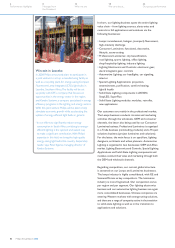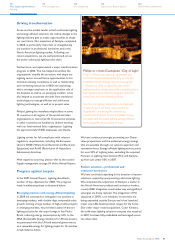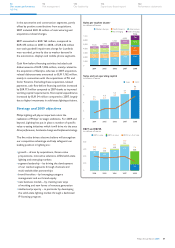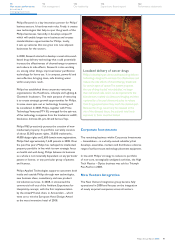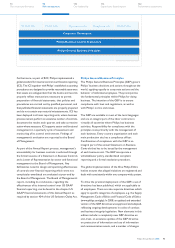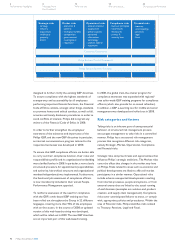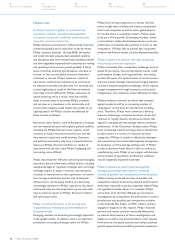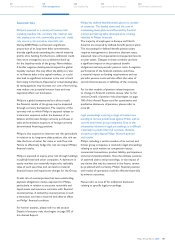Philips 2008 Annual Report Download - page 94
Download and view the complete annual report
Please find page 94 of the 2008 Philips annual report below. You can navigate through the pages in the report by either clicking on the pages listed below, or by using the keyword search tool below to find specific information within the annual report.
Corporate governance
Corporate governance is the system by which
a company is directed and controlled. Philips believes
that good corporate governance is a critical factor in
achieving business success. Good corporate governance
derives from, amongst other things, solid internal
controls and high ethical standards. Risk management
is a well-established part of Philips’ corporate
governance structure.
The quality of Philips’ systems of business controls
and
the findings of internal and external audits are
reported
to and discussed in the Audit Committee
of the Supervisory Board. Internal auditors monitor
the quality of the business controls through risk-based
operational audits, inspections of financial reporting
controls and compliance audits. Audit committees
at corporate and sector levels meet on a quarterly
basis to address weaknesses in the business control
infrastructure as reported by the auditors or revealed
by self-assessments, and to take corrective action
where necessary. These audit committees are also
involved in determining the desired company-wide
internal audit coverage as approved by the Audit
Committee of the Supervisory Board. An in-depth
description of Philips’ corporate governance structure
can be found in the chapter Corporate governance
that begins on page 254 of this Annual Report.
Philips Business Control Framework
The Philips Business Control Framework (BCF), derived
from the Committee of Sponsoring Organizations of
the Treadway Commission (COSO) framework on
internal control, sets the standard for risk management
and business control in Philips. The objectives of the
BCF are to maintain integrated management control
of the company’s operations, in order to ensure integrity
of the financial reporting, as well as compliance with
laws and regulations.
Philips has reviewed and further strengthened the
fundamentals of its BCF over recent years. The first
of these developments was the drive to harmonize
enterprise resource planning systems, with SAP as
the leading standard, enabling Philips to replace
time-consuming manual controls with embedded,
automated controls. Thereafter, Philips introduced
a program to systematically certify the critical IT
systems against an internal control standard which
is based on the generally accepted standard Control
Objectives for Information and related Technology.
Introduction
The following sections present an overview of Philips’
approach to risk management and business control
and a description of the nature and the extent of its
exposure to risks. Philips recognizes different risk
categories, namely Strategic risks, Market risks,
Operational risks, Compliance risks, and Financial
risks. These are further described in the section
Risk categories and factors of this Annual Report.
The risk overview highlights the main risks that may
hinder Philips in achieving its strategic objectives.
The risk overview may, however, not include all the
risks that may ultimately affect Philips. Some risks not
yet known to Philips, or currently believed not to be
material, could later turn out to have a major impact
on Philips’ businesses, objectives, revenues, income,
assets, liquidity or capital resources.
All oral and written forward-looking statements made
on or after the date of this Annual Report and attributable
to Philips are expressly qualified in their entirety by
the factors described in the cautionary statement on
forward-looking statements that begins on page 44
of this Annual Report and the risk factors described in
the section below entitled Risk categories and factors.
Our approach to risk management
and business control
Risk management forms an integral part of business
management. The company’s risk and control policy is
designed to provide reasonable assurance that objectives
are met by integrating management control into the
daily operations, by ensuring compliance with legal
requirements and by safeguarding the integrity of the
company’s financial reporting and its related disclosures.
It makes management responsible for identifying the
critical business risks and for the implementation of
fit-for-purpose risk responses. Philips’ risk management
approach is embedded in the areas of corporate
governance, Philips Business Control Framework and
Philips General Business Principles, and in the actual
periodic business planning and review cycles.
Risk
management
Philips Annual Report 200894
42
Our group performance
18
We care about...
8
Message from
the President
6
Performance highlights
14
Who we are




